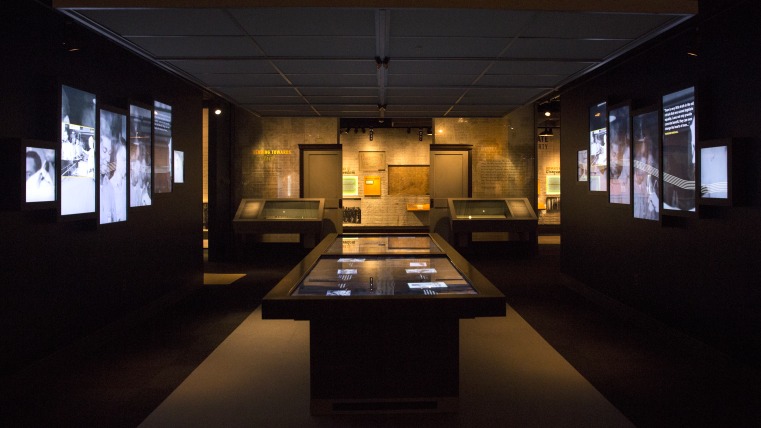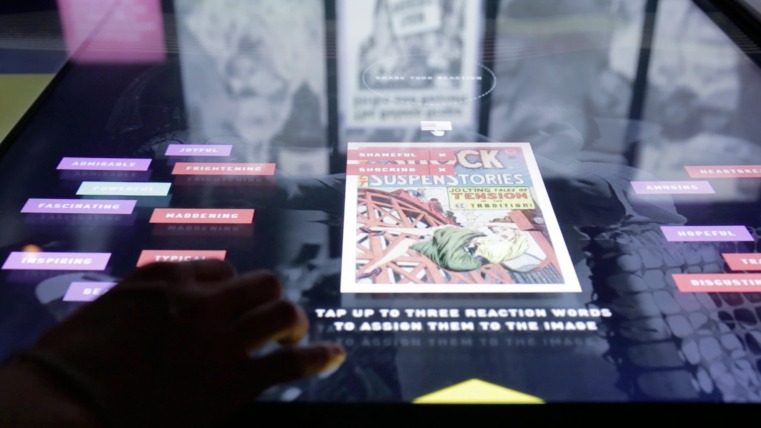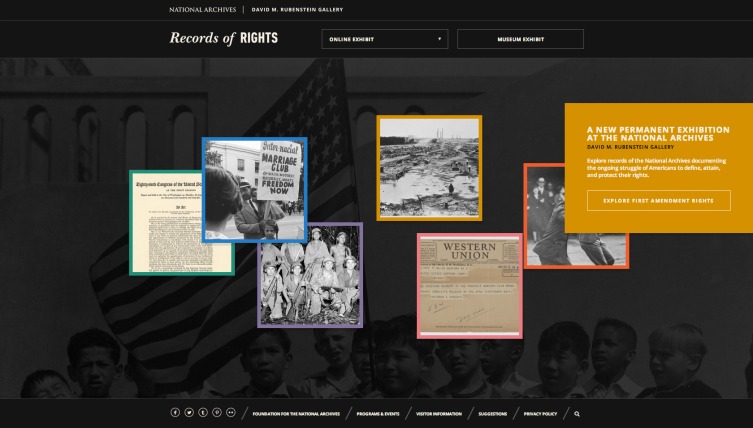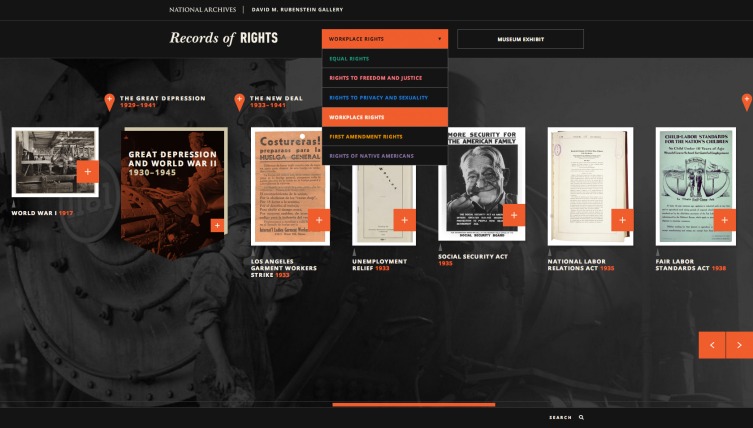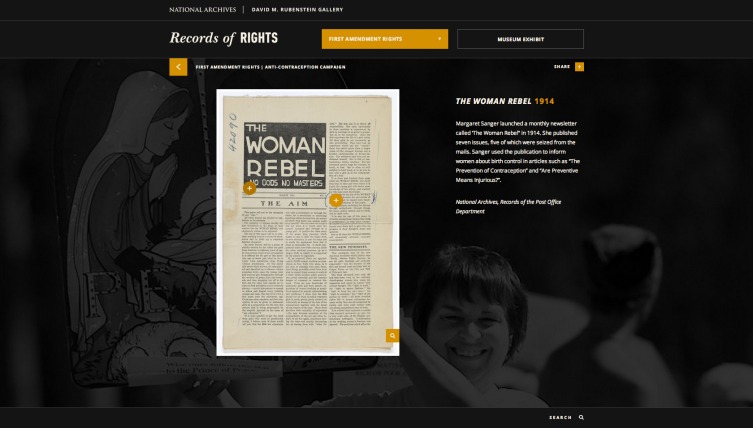Records of Rights Interactives
This interactive table and wall experience with an accompanying online exhibition immerses visitors of all ages in the quest for justice and equality in the United States.
From the abolition of slavery to defining workplace rights, protecting privacy to censorship, the permanent Records of Rights exhibit at the David M. Rubenstein Gallery at the National Archives draws on the Archives’ extensive collection of historic documents, images, and videos to share the history of the American struggle for freedom. At the center of the exhibit, a 15’ multi-touch, multi-user table allows individuals and groups to explore a wealth of diverse content. Simple, color-coded themes help users navigate the table, and they can search across categories to investigate the areas that interest them most. Scrollable timelines create visual narratives that expand and contract, and influencing events give greater context to the stories. Users can pinch and zoom for a closer look at the remarkable documents and photographs.
Perhaps most importantly, the table urges visitors to talk to each other about what they’re discovering. They can tag records with their emotional reactions and post these responses to nearby wall monitors for fellow visitors to see. Active table stations receive a notification when a record is shared, encouraging users to start a dialogue about the table’s content and deepening their engagement with the exhibit.
An accompanying online exhibition takes the important stories of triumph and struggle in our country beyond the gallery’s walls, allowing users to explore the table’s content from anywhere in the world.


